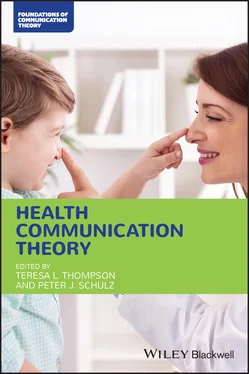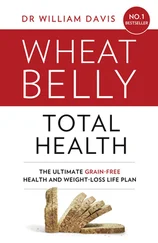1 ...7 8 9 11 12 13 ...22 Another individual difference variable to consider when segmenting an audience is locus of control, which refers to individuals’ acknowledgement of accountability for their life outcomes (Latimer, Katulak, Mowad, and Salovey 2005). The term locus of control was coined by Rotter (1966) more than five decades ago and refers to the degree individuals feel their life circumstances result from their actions and characteristics or are due to external forces considered to be out of their control such as chance, luck, or powerful others. Said differently, locus of control captures the extent to which people believe events in their life are caused by their actions or circumstances outside of their control (Kim and Baek 2019). The former is referred to as internal control whereas the latter reflects external control. Within the context of health outcomes, Wallston, Wallston, and DeVellis (1978) developed the multidimensional health locus of control scale. Health locus of controls reflects the degree to which people feel their health outcomes are contingent on their behavior or the behavior of others or the environment (Kannan and and Veazie 2015). The scale consists of three dimensions including internality (i.e. health outcomes are internally based and our individual responsibility) and externality, which features both chance (i.e. health outcomes are due to fate and out of our control) and powerful others (i.e. health outcomes are determined by powerful others such as a physician and thereby out of our control).
Locus of control is important to health practitioners considering its relation to a myriad of important behavior change variables. For instance, Brehm and Brehm (1981) identified locus of control as an individual difference variable closely linked to psychological reactance. Reactance is conceptualized as an aversive motivational state emanating from a threatened or eliminated freedom (Brehm 1966). Despite a cogent theoretical connection between locus of control and reactance, we are aware of only one study to examine the association between these theoretical constructs (Xu 2017). Xu demonstrated a stronger association between controlling language and reactance among individuals with an internal, as opposed to an external, locus of control. Delivering messages congruent with one’s locus of control beliefs stands as a fruitful approach to mitigating reactance following experimental work by Latimer and colleagues (2005). For example, it is reasonable to expect delivering a personal responsibility message to people with an internal locus of control while at the same time disseminating a health care provider responsibility message to those favoring an external locus of control would mitigate the reactance experienced. Although matching messages to one’s controllability beliefs is intuitively appealing, a fear persists that people with an external locus of control mindset may lack confidence in their ability to avoid aversive health complications (Booth‐Butterfield, Anderson, and Booth‐Butterfield 2000).
The relationship between an internal locus of control and self‐efficacy continues to emerge within the literature. Specifically, research has found the controllability of health outcomes beliefs is positively linked to increased self‐efficacy among individuals (Armitage 2003). For example, within the context of parental alcoholism effects on their adult children, Richards and Nelson (2012) discovered a positive association between self‐efficacy and an internal locus of control whereas a negative association emerged for individuals with an external locus of control. Health practitioners must remain aware of the positive association between control beliefs and one’s confidence in performing an advocated behavior. Moreover, maintaining an internal locus of control is positively correlated with conscientiousness and overall life satisfaction (Morrison 1997). Interestingly, recent research has connected heavy television viewers to maintaining an external locus of control (Kim and Baek 2019). Health promotion messages delivered to people with an external locus of control should emphasize self‐ and response efficacy through modeling as well as identifiable narratives in order to increase adoption rates. However, a heightened internal locus of control can have a downside. There remains speculation that an elevated internal locus of control could be positively associated with increased anxiety and unreasonable self‐blame (Richards and Nelson 2012). Future research should continue to investigate the benefits and costs with both a heightened internal or external locus of control. Taking the range of locus of control into consideration is important for health practitioners. Equally important is to consider one’s resistance to influential attempts as is discussed with the next individual difference variable, reactance proneness.
Although generally considered a psychological state (Brehm 1966), reactance can also be conceived as a variable that differentiates individuals on their likelihood to experience reactance, a motivational state operationalized as anger and negative cognitions following exposure to a freedom threat (Dillard and Shen 2005) in response to restrictions in autonomy and threats to behavioral freedom (Brehm and Brehm 1981; Chartrand, Dalton, and Fitzsimons 2007; Lienemann and Siegel 2016; Steindl et al. 2015). Reactance proneness is defined as an individual’s proclivity to feel reactance when one’s freedom is threatened or eliminated (Brehm and Brehm 1981; Lienemann and Siegel 2016; Steindl et al. 2015; Van Petegem, Soenens, Vansteenkiste, and Beyers 2015). Among several measures of reactance proneness (Dowd, Milne, and Wise 1991; Hong 1992; Hong and Faedda 1996; Hong and Page 1989; Merz 1983), Hong and Faedda’s (1996) reactance proneness scale is one of the most commonly utilized by researchers to capture individuals’ innate proclivity to experience reactance. Hong and Faedda’s (1996) scale measures one’s agreement with statements such as, “Regulations trigger a sense of resistance in me,” “I become frustrated when I am unable to make free and independent decisions,” and “When someone forces me to do something, I feel like doing the opposite.” Measuring reactance proneness is useful for targeting at‐risk and consistently resistant audiences (e.g. adolescents, substance‐dependent individuals, mental health patients; De las Cuevas, et al. 2014; Grandpre et al. 2003; LaVoie, Quick, Riles, and Lambert 2017; Miller et al. 2006; Miller and Quick 2010; Missotten et al. 2017; Quick, Bates, and Quinlan 2009; Quick, Shen, and Dillard 2013), as individuals high in reactance proneness are more likely to engage in risky behaviors (e.g. Miller and Quick 2010; Quick et al. 2013).
Audience segmentation based on reactance proneness is logical because reactance‐prone individuals respond similarly to messages (Quick et al. 2013; Trump 2016). For example, highly reactance‐prone individuals process and respond similarly to language perceived to threaten their autonomy (Dillard and Shen 2005), giving health communication professionals the possibility to anticipate responses to autonomy‐supporting versus autonomy‐restricting language. Highly reactance prone individuals are self‐driven, self‐reliant, resistant to external influences, and confrontational (Quick et al. 2013; Seibel and Dowd 2001). These individuals will defend their freedom at all costs (Wicklund 1974) and feel particularly attacked by persuasive messages and intentional influence attempts (LaVoie et al. 2017; Quick and Stephenson 2008). As a result, reactance proneness might often lead to message rejection (for a review, see Quick et al. 2013). For example, reactance proneness is associated with boomerang effects in response to smoking cessation messages (Grandpre et al. 2003; Henriksen et al. 2006; LaVoie et al. 2017; Miller et al. 2006), risky sex (Miller and Quick 2010), and with effective parent–child communication (Missotten et al. 2017). Given the increased likelihood of maladaptive responses, it is recommended that promotional messages be tailored to reactance‐prone individuals in a way that bolsters their autonomy. Segmenting an audience with reactance proneness in mind can help practitioners plan for less autonomy‐suppressing appeals and prevent maladaptive freedom restoration outcomes (Trump 2016). Related to autonomy preservation and maintaining a favorable impression, the next section introduces self‐monitoring and how this individual difference variable can be used as an audience segmentation psychographic variable.
Читать дальше












